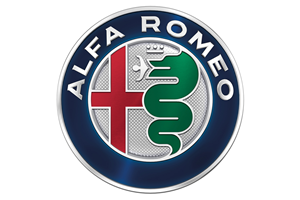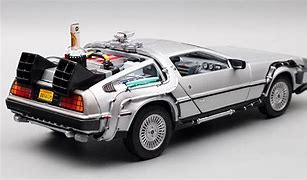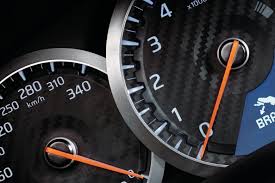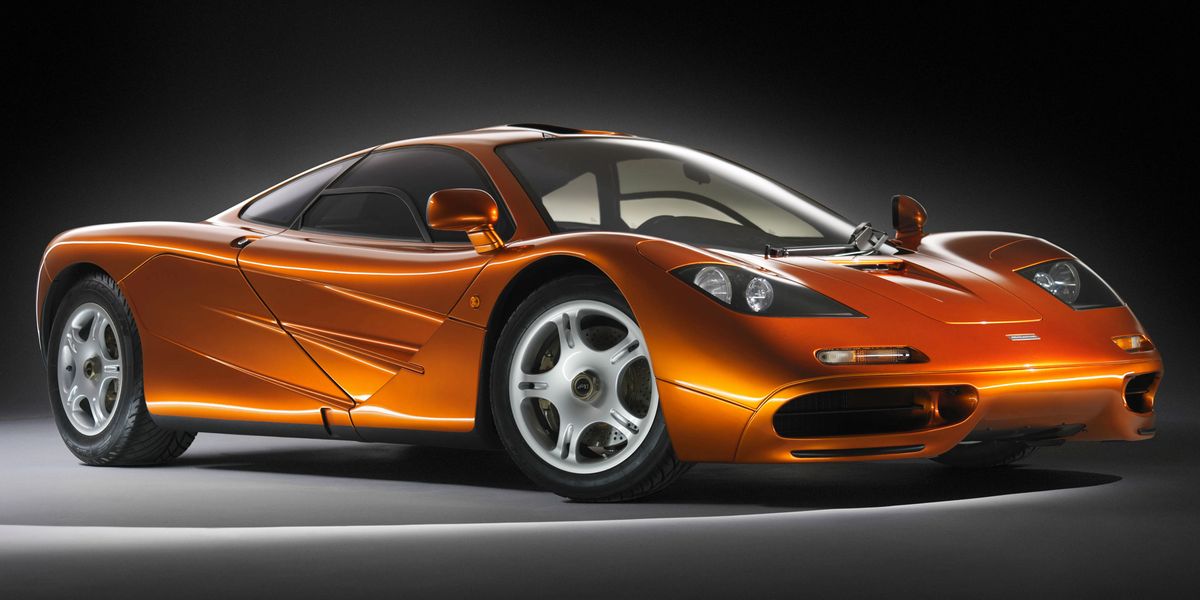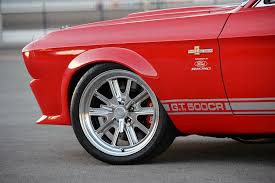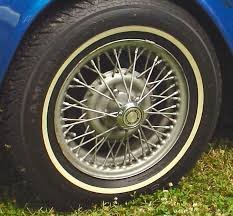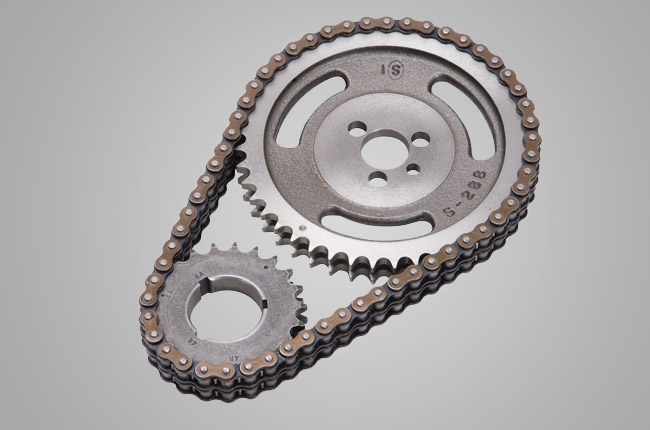A brief history of
Alfa-Romeo
Introduction
The car manufacturer Alfa-Romeo has made an important impact on the automotive world. In this article we will give a brief but detailed history of the Alfa-Romeo marque.
We will look at the origins of Alfa-Romeo looking at who, why, where and when Alfa-Romeo was founded. We'll look at the design of the iconic Alfa-Romeo logo and what are some the more significant Alfa-Romeo models.
We'll take a glance at what racing history the Alfa-Romeo has and who some of the most important people have been in the history of Alfa-Romeo over the years.
Who, where, when and why was
Alfa-Romeo founded?
Alfa Romeo, one of Italy's most iconic and revered automobile manufacturers, has a rich history that dates back over a century. The company was founded by a group of Italian investors and a Frenchman, who came together to create a brand that would leave a lasting impact on the automotive world. Let's explore who, when, where, and why Alfa Romeo was founded:
In 1906, a group of entrepreneurs led by Alexandre Darracq, a French automobile manufacturer, established the Societ� Anonima Italiana Darracq (SAID) in Milan, Italy. However, due to disagreements and differences in vision, Darracq left the company in 1909. Following his departure, the remaining Italian investors, including Ugo Stella, acquired the company and renamed it "Anonima Lombarda Fabbrica Automobili," which later became known as Alfa Romeo.
The founding of Alfa Romeo took place on June 24, 1910, in Milan, Italy. The company's headquarters were located in a district called Portello, which served as the manufacturing hub for Alfa Romeo's early production. The first factory in Portello produced small and medium-sized cars, and it soon gained recognition for its engineering prowess and cutting-edge technology.
Alfa Romeo was founded with a clear mission: to design and manufacture high-performance, luxurious automobiles that would captivate the hearts and minds of automotive enthusiasts. The founders aimed to create vehicles that blended Italian elegance with advanced engineering, emphasizing both style and substance. Alfa Romeo quickly gained a reputation for producing innovative and well-crafted cars that showcased the company's commitment to excellence.
One of the significant factors that contributed to Alfa Romeo's success was its involvement in motorsports. From its early years, Alfa Romeo recognized the value of racing as a platform to showcase its engineering prowess and gain global recognition. The company's first racing victory came in 1911 when an Alfa Romeo car won the Targa Florio, an endurance race held in Sicily. This triumph marked the beginning of Alfa Romeo's illustrious racing heritage.
Over the years, Alfa Romeo continued to make significant contributions to the world of motorsports. The company achieved numerous victories in prestigious events like the Mille Miglia and the 24 Hours of Le Mans, solidifying its status as a dominant force on the racing circuit. Alfa Romeo's success on the track not only enhanced its reputation but also served as a valuable testing ground for developing new technologies and pushing the limits of automotive performance.
Throughout its history, Alfa Romeo has been known for its iconic and beautifully designed cars. From classic models like the Alfa Romeo Spider and the Giulia to modern creations like the Alfa Romeo Giulietta and the Stelvio, each vehicle embodies the brand's distinctive style and attention to detail. Alfa Romeo's commitment to innovation, performance, and elegance has made it a coveted brand among automotive enthusiasts and collectors worldwide.
Today, Alfa Romeo continues to produce cars that blend timeless design with cutting-edge technology. The brand's legacy of passion, craftsmanship, and performance lives on, as Alfa Romeo cars capture the essence of the Italian spirit and continue to inspire drivers around the world.
How did the
Alfa-Romeo logo originate?

How did the Alfa-Romeo logo originate?
The Alfa Romeo logo is a distinctive emblem that has represented the Italian automobile manufacturer since its inception. The logo features a red cross on a white background, surrounded by a green serpent swallowing a man. This iconic symbol has a rich history that dates back to the early 20th century.
The origins of the logo can be traced back to the city of Milan, Italy, where Alfa Romeo was founded in 1910. The red cross on a white background is a symbol associated with Milan, representing the city's patron saint, Saint Ambrose. It was incorporated into the logo as a tribute to the brand's roots in Milan.
The green serpent swallowing a man is known as the "Biscione," which is a prominent symbol in Milanese heraldry. The Biscione has been associated with various noble families in the region, and it represents power and strength. Alfa Romeo adopted the Biscione as a symbol of its heritage and to convey its performance and prowess on the racetrack.
Over the years, the Alfa Romeo logo has undergone subtle changes, but the core elements have remained consistent. The logo has evolved in terms of design and typography, reflecting the changing times and design trends. However, the fundamental symbolism of the red cross, the Biscione, and the colors has remained intact.
The Alfa Romeo logo is not only a visual representation of the brand but also a testament to its history and identity. It embodies the company's connection to Milan, its racing heritage, and its commitment to producing high-performance vehicles. The logo continues to be recognized and revered by automotive enthusiasts worldwide, symbolizing the passion and elegance that define Alfa Romeo.
What are some of the significant
Alfa-Romeo models?
Alfa Romeo, the esteemed Italian automaker, has a rich history of producing exceptional and influential models that have left an indelible mark on the automotive world. From classic beauties to modern performance machines, Alfa Romeo has consistently showcased its passion for design, innovation, and driving pleasure. Let's delve into the details of some of Alfa Romeo's most significant models:
1. Alfa Romeo Giulietta (1954-1965): The Alfa Romeo Giulietta was a compact sports car that became an instant icon. It introduced several innovative features for its time, including an all-aluminum twin-cam engine, four-wheel disc brakes, and a lightweight body. The Giulietta set new standards for performance and handling in the compact car segment and laid the foundation for Alfa Romeo's future success.
2. Alfa Romeo Spider (1966-1994): The Alfa Romeo Spider is one of the most recognizable and beloved convertibles ever produced. With its timeless Pininfarina-designed body and exhilarating driving dynamics, the Spider captured the hearts of enthusiasts around the world. It became an icon of style and freedom, symbolizing the joy of open-top motoring.
3. Alfa Romeo 33 Stradale (1967-1969): The Alfa Romeo 33 Stradale is a rare and extraordinary supercar that showcased Alfa Romeo's engineering prowess. With a top speed of 160 mph, it was one of the fastest road-legal cars of its time. The 33 Stradale featured breathtaking design, advanced technology, and exquisite craftsmanship, making it a highly sought-after collector's item today.
4. Alfa Romeo 156 (1997-2007): The Alfa Romeo 156 was a game-changer for the brand. It brought a new level of style, performance, and sophistication to the midsize sedan segment. The 156's elegant design, sporty handling, and innovative engineering earned it numerous accolades, including the prestigious European Car of the Year award in 1998.
5. Alfa Romeo 8C Competizione (2007-2010): The Alfa Romeo 8C Competizione was a limited-production grand tourer that showcased the brand's commitment to craftsmanship and performance. With its stunning design, powerful V8 engine, and carbon fiber bodywork, the 8C Competizione epitomized automotive artistry. Only 500 units were produced, adding to its exclusivity and desirability.
6. Alfa Romeo Giulia Quadrifoglio (2016-present): The Alfa Romeo Giulia Quadrifoglio redefined the performance sedan segment. Powered by a Ferrari-derived V6 engine, the Giulia Quadrifoglio delivers blistering acceleration and razor-sharp handling. Its striking design, luxurious interior, and engaging driving dynamics make it a true driver's car and a worthy competitor to its German rivals.
7. Alfa Romeo Stelvio Quadrifoglio (2017-present): The Alfa Romeo Stelvio Quadrifoglio is an SUV that combines Italian flair with impressive performance capabilities. With its 2.9-liter V6 engine producing 505 horsepower, the Stelvio Quadrifoglio holds the title for the fastest SUV around the N�rburgring racetrack. It offers a thrilling driving experience without compromising on practicality and versatility.
These are just a few examples of Alfa Romeo's most significant models, each representing a chapter in the brand's storied history. Alfa Romeo's dedication to creating cars that inspire passion and deliver exhilarating performance has established the brand as a symbol of Italian excellence and driving pleasure.
As Alfa Romeo looks to the future, it continues to build on its legacy, blending iconic design with cutting-edge technology. With upcoming models like the Tonale, Alfa Romeo aims to capture new audiences while staying true to its heritage. With a commitment to craftsmanship, performance, and the spirit of La Meccanica delle Emozioni (The Mechanics of Emotions), Alfa Romeo will undoubtedly continue to produce remarkable cars that ignite the senses and captivate automotive enthusiasts around the world.

One of Alfa-Romeo's Most Iconic Models
Who are some of the most important people in
Alfa-Romeo's History
Alfa Romeo, the iconic Italian automobile manufacturer, has been shaped and influenced by numerous significant individuals throughout its storied history. These individuals, ranging from engineers to designers and racing legends, have played a pivotal role in establishing Alfa Romeo as a symbol of performance, innovation, and style.
One of the most influential figures in Alfa Romeo's history is Nicola Romeo. In 1915, Romeo acquired the struggling company and transformed it into a major industrial powerhouse. Under his leadership, Alfa Romeo expanded its production capabilities and diversified its offerings, becoming a leading manufacturer of both automobiles and aircraft engines. Romeo's vision and business acumen laid the foundation for Alfa Romeo's future success.
Another prominent figure in Alfa Romeo's history is Orazio Satta Puliga. Puliga was a gifted engineer and designer who joined the company in the 1930s. He was responsible for creating some of Alfa Romeo's most iconic cars, including the legendary Alfa Romeo 1900, the Giulietta, and the Giulia. Puliga's designs combined elegance, aerodynamic efficiency, and superior performance, establishing Alfa Romeo as a force to be reckoned with in the automotive world.
When discussing Alfa Romeo's racing legacy, one name that stands out is Enzo Ferrari. Before establishing his own eponymous brand, Ferrari was the racing director for Alfa Romeo in the 1920s and early 1930s. He played a crucial role in leading the Alfa Romeo racing team to numerous victories, including the prestigious Mille Miglia and the 24 Hours of Le Mans. Ferrari's expertise and relentless pursuit of excellence left an indelible mark on Alfa Romeo's racing heritage.
Juan Manuel Fangio, widely regarded as one of the greatest Formula One drivers of all time, also contributed significantly to Alfa Romeo's racing success. Fangio drove for Alfa Romeo during the 1950s, winning two Formula One World Championships with the team. His skill, determination, and exceptional racing instincts solidified Alfa Romeo's reputation as a dominant force in motorsports during that era.
During the 1960s and 1970s, a talented engineer by the name of Carlo Chiti made a significant impact at Alfa Romeo. Chiti was instrumental in developing the Alfa Romeo Tipo 33, a series of successful sports racing cars. These cars achieved numerous victories in various endurance races, including the prestigious Targa Florio and the 24 Hours of Daytona. Chiti's engineering prowess and dedication to performance made a lasting impression on Alfa Romeo's racing division.
In recent years, the contributions of Antonio Baravalle cannot be overlooked. Baravalle served as CEO of Alfa Romeo from 1996 to 2002, a critical period for the brand's revival. Under his leadership, Alfa Romeo introduced iconic models like the Alfa Romeo 156 and the Alfa Romeo 147, which combined distinctive Italian design with advanced technology. Baravalle's strategic vision and commitment to reinvigorating the Alfa Romeo brand set the stage for its future success.
These individuals, among many others, have left an indelible mark on Alfa Romeo's legacy. Through their innovation, passion, and unwavering dedication, they have propelled the brand forward, shaping its identity and cementing its place in automotive history. Alfa Romeo continues to honor their contributions by producing exceptional vehicles that capture the spirit and essence of Italian automotive excellence.

One of the most influential people in the history of Alfa-Romeo
Alfa-Romeo's Racing History
Alfa Romeo, the renowned Italian automaker, has a rich and storied racing history that spans over a century. From its early successes in Grand Prix racing to its triumphs in endurance events, Alfa Romeo has left an indelible mark on the world of motorsports. Let's delve into the racing history of Alfa Romeo:
Alfa Romeo's racing legacy began in the early 1900s when the company's founder, Nicola Romeo, recognized the value of motorsports as a platform to showcase the brand's engineering prowess and performance capabilities. Alfa Romeo cars quickly gained recognition for their innovative design, advanced technology, and exceptional performance on the race track.
One of Alfa Romeo's defining moments in motorsports came in the 1920s when the company introduced the Alfa Romeo P2. This Grand Prix racing car proved to be incredibly successful, winning numerous races and championships. Notably, Alfa Romeo secured the inaugural Formula One World Championship title in 1950 with the legendary driver Nino Farina behind the wheel of an Alfa Romeo 158 "Alfetta."
Alfa Romeo's dominance continued in the 1930s with the introduction of the Alfa Romeo Tipo B, also known as the "P3." This car featured advanced engineering, including a supercharged eight-cylinder engine and a streamlined body design. It went on to win several Grands Prix races, solidifying Alfa Romeo's position as a frontrunner in the racing world.
During the post-World War II era, Alfa Romeo faced financial challenges that temporarily halted its racing endeavors. However, in the 1950s, the company returned to racing with the Alfa Romeo 1900, which competed in endurance events such as the Mille Miglia and the Targa Florio. These races showcased the durability, reliability, and performance capabilities of Alfa Romeo's road-going cars.
In the 1960s and 1970s, Alfa Romeo made its mark in touring car racing with the iconic Alfa Romeo Giulia Sprint GTA. This lightweight and nimble car became a force to be reckoned with, dominating the European Touring Car Championship and securing multiple victories. The GTA's success was a testament to Alfa Romeo's commitment to creating high-performance cars that excelled both on the road and on the track.
Alfa Romeo's racing success extended to endurance racing as well. In the 1930s, the brand achieved victory at the prestigious 24 Hours of Le Mans race, demonstrating its ability to excel in long-distance challenges. Alfa Romeo also had a strong presence in sports car racing, with models like the Alfa Romeo 33 Stradale and the Alfa Romeo T33/TT/12 achieving notable success in events like the Targa Florio and the World Sportscar Championship.
In recent years, Alfa Romeo has continued to participate in various racing disciplines. The brand's return to Formula One in 2018 with the Alfa Romeo Racing team marked a significant milestone, bringing Alfa Romeo's racing heritage back to the pinnacle of motorsports. The team's participation in Formula One has reaffirmed Alfa Romeo's commitment to competition, performance, and technological advancement.
Alfa Romeo's racing history is a testament to the brand's relentless pursuit of excellence and the passion it holds for motorsports. The company's success on the track has not only bolstered its reputation but also provided valuable lessons and inspiration for the development of its road cars. Alfa Romeo's racing DNA continues to be a defining characteristic of its vehicles, emphasizing a blend of performance, style, and emotion.
As Alfa Romeo looks towards the future, its racing legacy serves as a reminder of the brand's commitment to innovation, pushing boundaries, and capturing the spirit of competition. Whether on the streets or on the race track, Alfa Romeo's rich racing heritage continues to inspire and captivate automotive enthusiasts around the world.
Summary
Alfa Romeo, the renowned Italian automobile manufacturer, has a rich history rooted in performance, innovation, and style. With a lineage that dates back to 1910, Alfa Romeo has been shaped by significant individuals who have left a lasting impact on the brand.
From Nicola Romeo, who transformed the company into an industrial powerhouse, to Orazio Satta Puliga, the gifted designer behind iconic models, Alfa Romeo has been driven by visionary leaders. Enzo Ferrari, the racing director in the 1920s, and Juan Manuel Fangio, a legendary Formula One driver, further cemented the brand's racing heritage. Notably, Carlo Chiti's engineering prowess and Antonio Baravalle's strategic vision also played vital roles in Alfa Romeo's evolution.
Today, Alfa Romeo continues to captivate enthusiasts worldwide with its distinctive Italian design, advanced technology, and performance-oriented vehicles. The brand's legacy is a testament to the passion and innovation that have defined Alfa Romeo throughout its journey, making it an enduring symbol of automotive excellence.
View Alfa-Romeo Car Specifications
More Manufacturer Histories.




